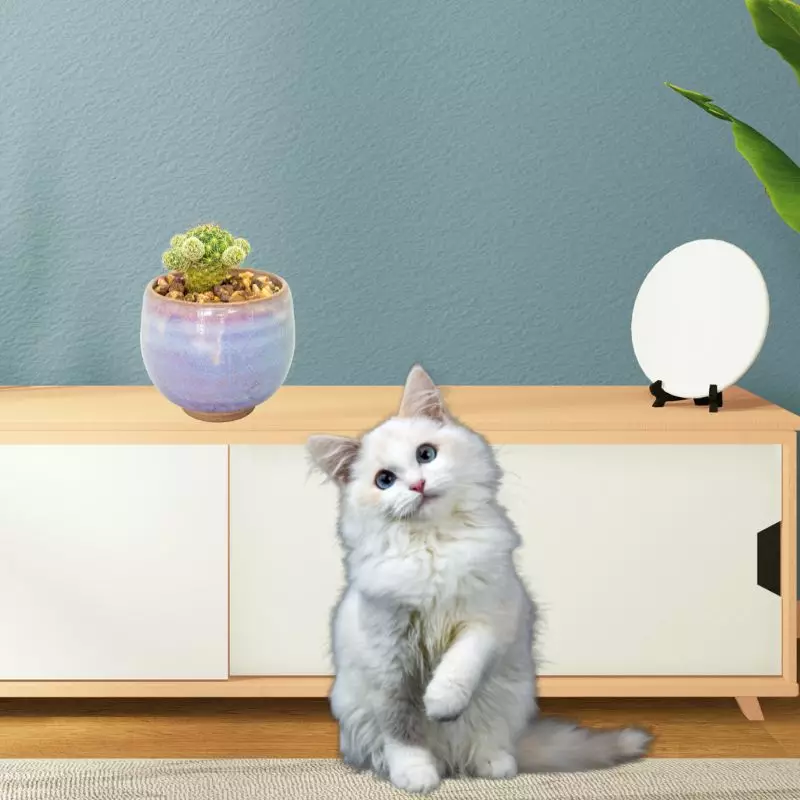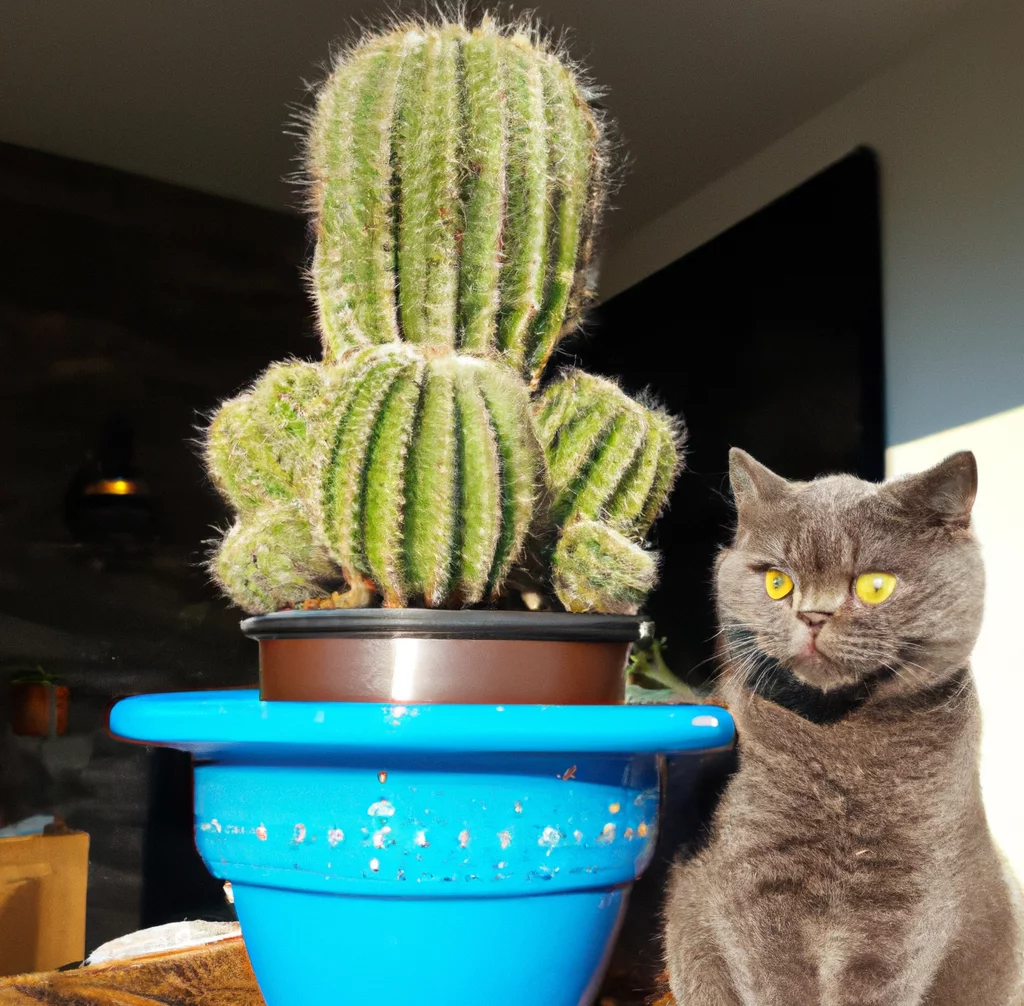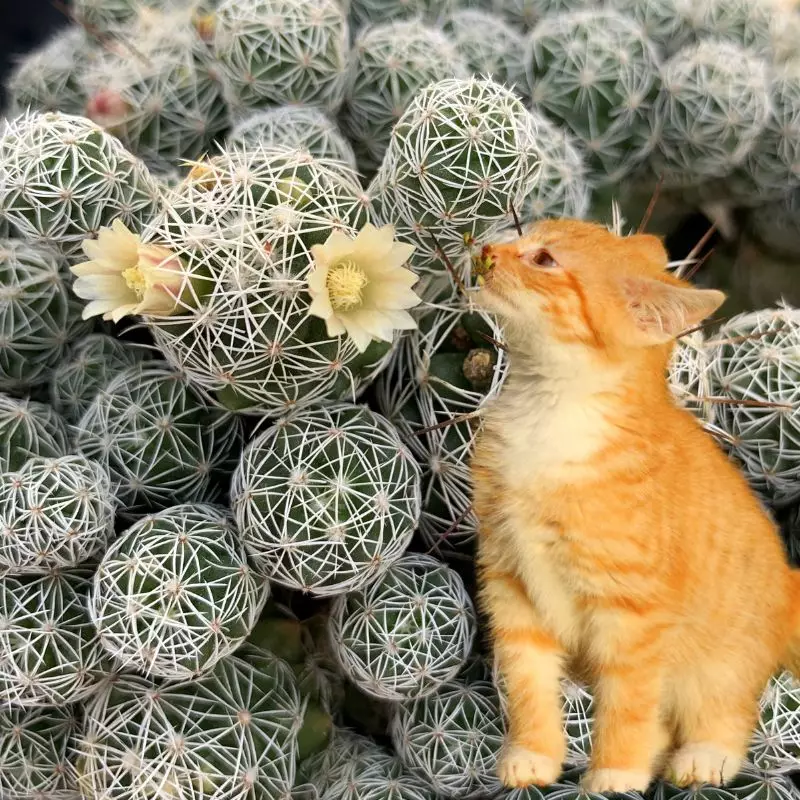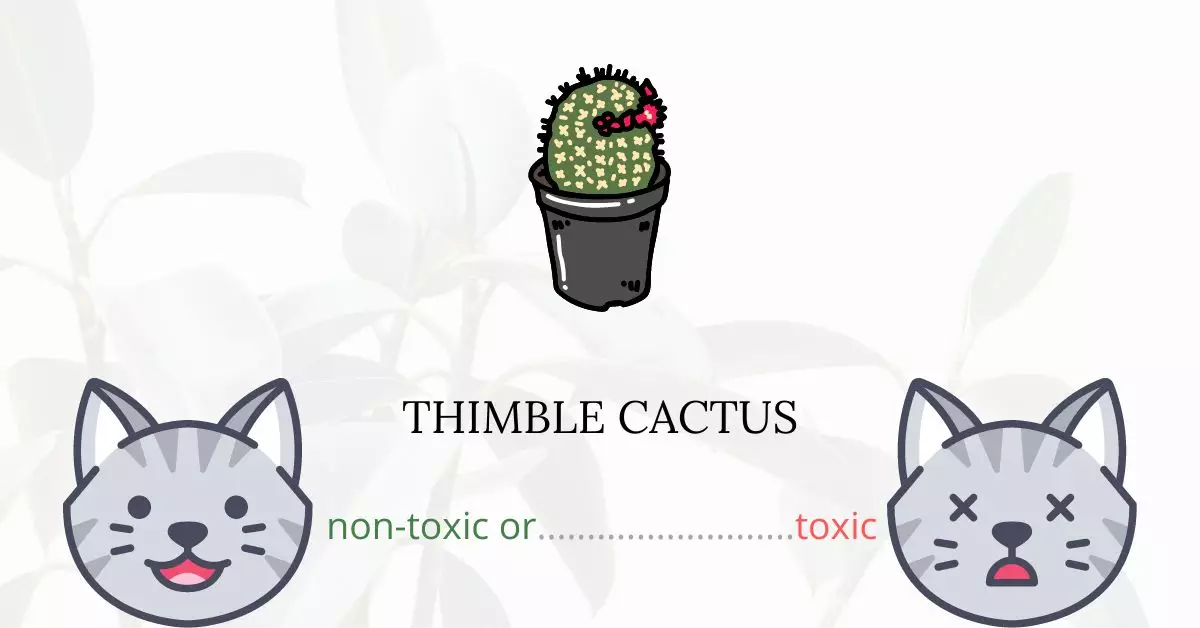The Thimble Cactus is not toxic for cats. In fact, it is recognized as a non-toxic plant on the ASPCA’s list, making it a safe addition to homes with feline residents. For those who have a penchant for succulents and share their living space with cats, the Thimble Cactus emerges as a perfect choice.
This article has been authored with insights from a team of experienced DVMs (doctors of veterinary medicine). Their expertise ensures that our readers are provided with accurate and up-to-date information on the potential risks associated with various plants, with a special focus on Thimble Cactus in this context. Furthermore, in our quest for thoroughness, we’ve referenced high-authority websites such as ASPCA and PetMD to guarantee the most accurate understanding of each plant’s effects on cats.
Can Cats Eat Thimble Cactus?

Your cats may not like the spiky and rough thimble cacti. While this plant is safe for them, it is not recommended for cat consumption.
Plant materials are not digested inside the cat’s stomach. Because cats are carnivorous species, their bodies are not capable of fully processing plant matter. If cats eat a lot of plants, they may experience indigestion. They may show signs of gastrointestinal issues like vomiting, abdominal pain, and diarrhea.
These symptoms are only short-lived so you do not have to panic. The illnesses typically go away after your cat has expelled the plant materials from his body.
What is Thimble Cactus?

Scientifically known as Mammillaria Gracilis Fragilis, the thimble cactus is a beautiful cactus native to Mexico. The oval body of the winter-dormant succulent plant grows in clusters. This unusual plant, which is a member of the Cactaceae family, can reach a height of 4 inches.
Thimble cacti are tiny pincushion-shaped plants with a dense layer of white spines. If given enough room, its prodigious clusters can spread into a mounded mat. The stem segments easily separate but quickly reroot. It grows little, light cream to pink blooms that are native to Mexico.
Thimble cactus cannot endure a severe frost. You can bring this specific cactus variation indoors to grow on a sunny window sill or under a grow light if there is a chance of freezing temperatures.
The thimble cactus blooms in the spring and from late summer to early fall. These plants have delicate, white and pale yellow flowers. They can be easily propagated thanks to their offsets. It is a low-maintenance plant that fits in well with any home, garden, or room.
Keeping Cats Away From Thimble Cactus

Using deterrent sprays is the most affordable and practical option. You can spray your plant with a variety of cat repellent sprays without causing any harm to it or the cat. You can easily buy these products from pet stores near you.
Because cats don’t like the texture of aluminum foil, you can also scatter bits of this material on the ground to drive felines away. Pine cones can also be used for this purpose; simply surround your succulent plants with them to keep your cats away.
Plants to Avoid For Your Cats
If you are a cat owner and unsure if the plants growing in your yard are harmful to your cats, check out this list of toxic plants for cats. You can also check our list of non-toxic plants for cats.





